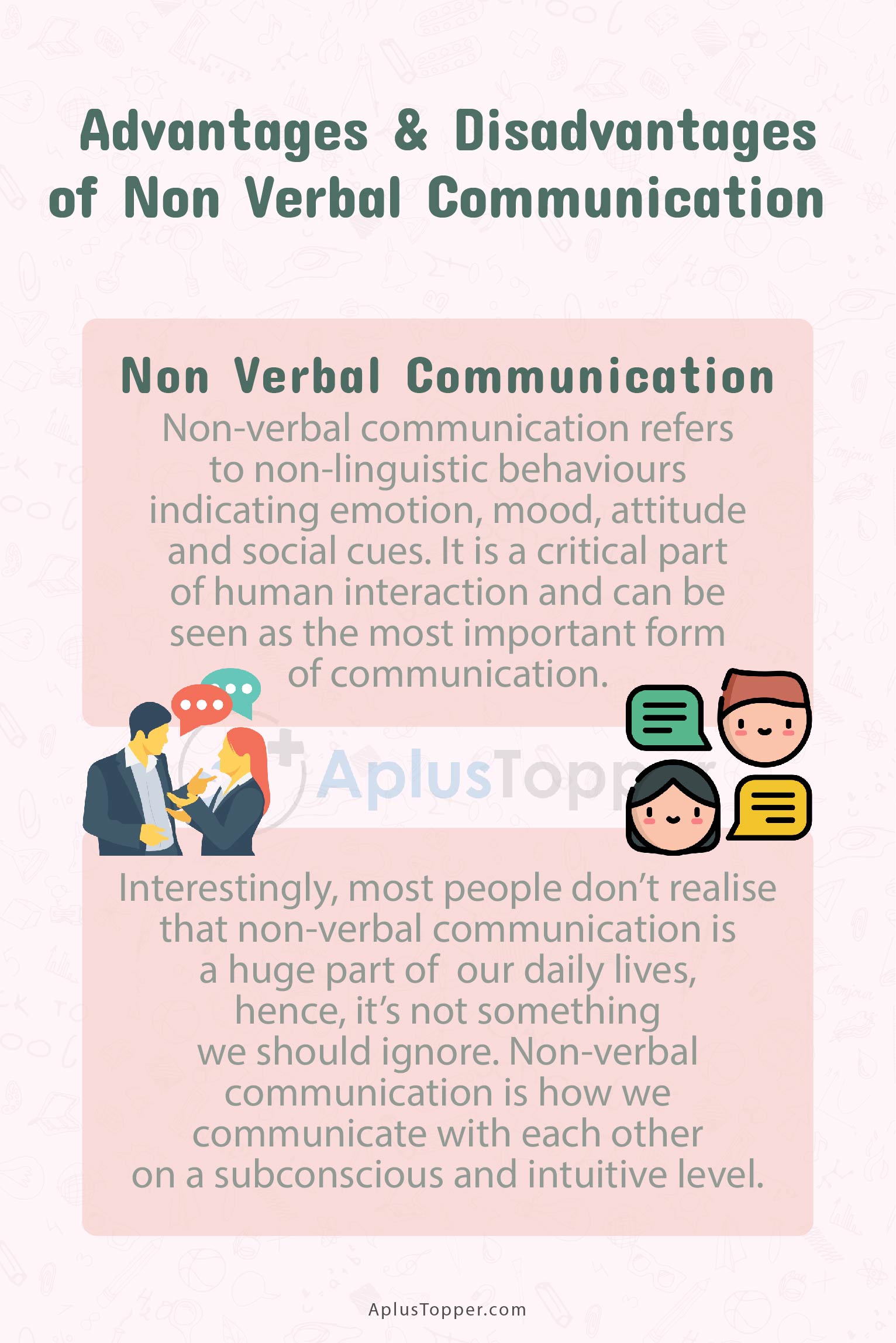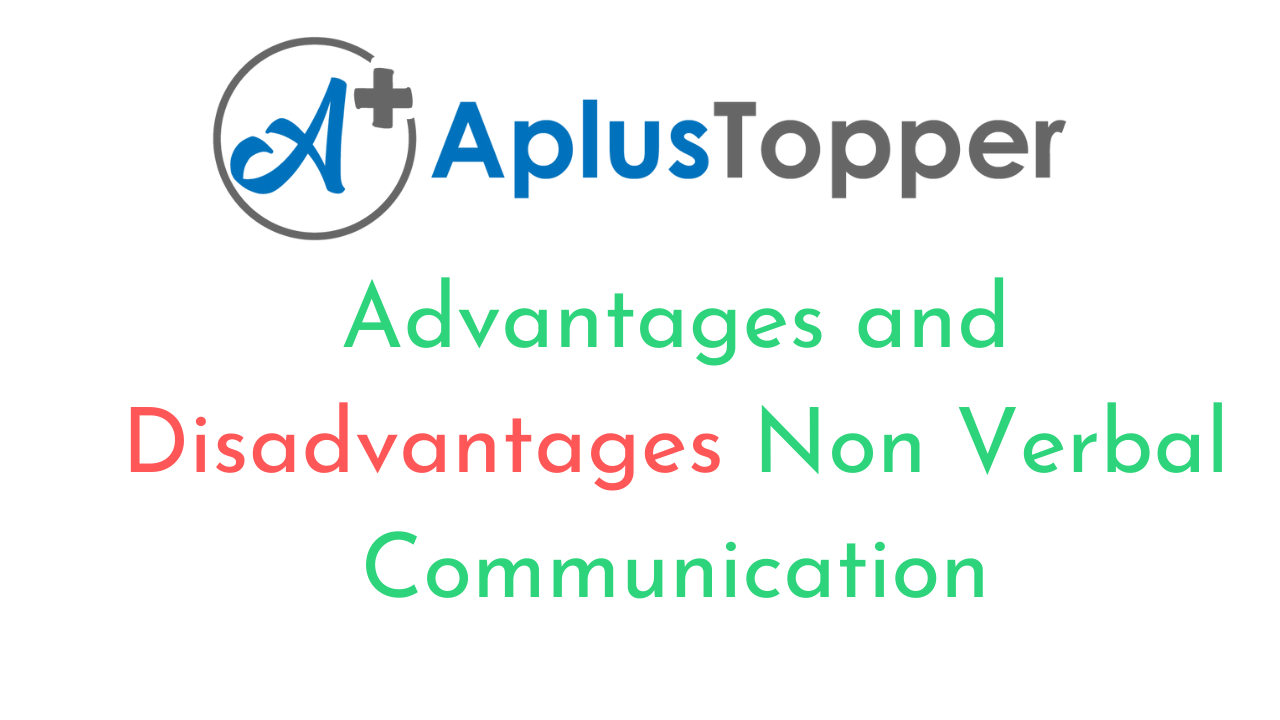Non-Verbal Communication Advantages And Disadvantages: Non-verbal communication refers to non-linguistic behaviours indicating emotion, mood, attitude and social cues. It is a critical part of human interaction and can be seen as the most important form of communication. Moreover, non-verbal communication is a valuable tool for expressing oneself. It is hard to control what the body does and we will not be able to articulate everything with words. That’s why it is important to be aware of the different ways that people express themselves, such as using gestures, facial expressions, and tone of voice.
Interestingly, most people don’t realise that non-verbal communication is a huge part of our daily lives, hence, it’s not something we should ignore. Non-verbal communication is how we communicate with each other on a subconscious and intuitive level. How someone walks, talks, gestures, and looks can be the difference between being loved and hated. Studies have shown that our non-verbal behaviour can tell us in a matter of minutes whether a person with whom we are communicating likes us or not. By taking time to understand and observe our body language, we can better predict what people find appealing. We can learn about their values and beliefs, as well as other interesting details.
The human body is a highly expressive part of our being. Our facial expression, posture, gestures and movements are all part of our language as they communicate our feelings and thoughts. Our body’s language can tell us what emotions we are experiencing, how we are feeling and what is going on in our mind. In addition to communicating through non-verbal behaviour, our body will also react to the feelings of others in subtle ways. Our blood pressure and breathing rate may be affected by the tone of another person’s voice. This is called emotional contagion, and it is a very powerful form of communication. Even the natural chemical messengers within our bodies, such as hormones and adrenaline, are affected by the emotions of others.
In this article, we will discuss the advantages and disadvantages of non-verbal communication, its impact on our perception as well as other factors.
Students can also find more Advantages and Disadvantages articles on events, persons, sports, technology, and many more.
- Advantages of Non-Verbal Communication
- Disadvantages of Non-Verbal Communication
- Comparison Table for Advantages and Disadvantages of Non-Verbal Communication
- Conclusion on Non-Verbal Communication Advantages And Disadvantages
- FAQs on Non-Verbal Communication Advantages And Disadvantages
Advantages of Non-Verbal Communication
Non-verbal communication may seem unimportant to some. But, it is the best way to express oneself and understand others without any words at all. With non-verbal communication, you can get a sense of the mood someone is in, their emotions, and even basic needs. For example, if you know that your boss is angry when they raise their voice or they have their arms crossed so that means you need to be on your best behaviour because they won’t take any excuses. Other advantages of non-verbal communication are as follows:
- Provides clarity – Non-verbal communication has been around for centuries and it’s a way of communicating that is not limited to just facial expressions or body language. It is also a way to encourage clarity in conversations, especially with those who do not speak the same language. With the rise of social media, non-verbal communication has become more accessible and more connecting.
- Non-verbal communication can substitute for verbal communication – The non-verbal message conveys the same meaning as the verbal message. For example, if a person is visibly upset then their face should show this emotion. It is also important for people to be aware of how much non-verbal communication goes on around them so that they can adjust accordingly.
- Useful for illiterate people – A lot of people wonder why it’s important to have non-verbal communication if you can’t read body language. Well, for the illiterate people, verbal communication is not an option because they don’t know how to read. This means that their communication is limited to the use of actions and gestures.
- Useful for specially abled people – Communication is a huge part of life, and it is often taken for granted. However, communication is difficult for some people who are unable to speak, read lips or hear well. Verbal communication can be difficult for these individuals as well, even when it’s just something simple like asking for directions. Non-verbal communication is the most common form of communication and can help those who have special needs.
- Impactful and effective – Non-verbal communication can often be more effective than verbal communication because we unconsciously tend to pay more attention to non-verbal facial expressions, tone of voice, and body language. Another advantage is that it’s less likely for people to misread our non-verbal cues and misunderstand what we are saying.
- Quicker transmission of messages – Language is one of the most important things to communicate with others, especially in a business setting. With non-verbal communication, you are able to relay messages more quickly and effectively than verbal. Moreover, non-verbal communication is a powerful way of connecting with others. You can use non-verbal messages to express what you are thinking or feeling without having to talk about it. Non-verbal messages are able to carry more emotional weight than verbal ones.
- Reduces wastage of time – Verbal communication can be a time-consuming activity, especially when trying to convey complex messages or intentions. This is because verbal communication takes up more effort than non-verbal communication. Non-verbal communication, on the other hand, is economical of time and is easier for others to understand.
Disadvantages of Non-Verbal Communication
Non-verbal communication is a big part of our daily lives. Whether it is at work, with family or friends, non-verbal communication can help us to express what we want to say and how we feel. But non-verbal communication is not without its disadvantages; one being that our body language and facial expressions can easily be misinterpreted. Other disadvantages of non-verbal communication are as follows:
- Imprecise and vague – It is true that non-verbal communication is poor in conveying specific information and often leaves people with a feeling of uncertainty. It is less precise than verbal communication, which can increases chances of misinterpretation
- Long conversations are not possible – Non-verbal communication is often used for communication so verbal language can be saved for more important matters. People who have a hard time understanding or expressing themselves verbally often use body language or facial expressions to get their point across. However, non-verbal messages can only convey what they want in the moment; they cannot keep up with the flow of dialogue between two people.
- Meaning varies across cultures – Verbal communication is a lot easier to understand and take in because it is explained with words. Non-verbal communication is often the opposite of this and can be difficult to understand. For example, the hand sign where the index finger touches the thumb while forming an ‘O’ refers to “okay” or “super” in Indian culture. However, this same sign has a derogatory meaning in other cultures, notably in South America.
- Might Distort information – Non-verbal communication is very complex and relies heavily on visual cues. One key challenge to non-verbal communication is that it can be misinterpreted, which can lead to misinterpretations in verbal communication. Non-verbal signals can also be confused with one another.

Comparison Table for Advantages and Disadvantages of Non-Verbal Communication
Following are the advantages and disadvantages of Non-Verbal Communication.
| Advantages | Disadvantages |
| Reduces wastage of time | Might Distort information |
| Quicker transmission of messages | Meaning varies across cultures |
| Impactful and effective | Long conversations are not possible |
| Useful for specially abled people and also for illiterate people | Imprecise and vague |

Conclusion on Non-Verbal Communication Advantages And Disadvantages
Non-verbal communication is a crucial factor in how people come across to others, and it’s important to spend more time on this form of communication if you want to be more influential. It would also be worthwhile for you to spend more time on how you’re speaking, as it can often be the best way to make a point without using words. This is especially true for those trying to be more influential.
FAQs on Non-Verbal Communication Advantages And Disadvantages
Question 1.
What is Non-Verbal Communication?
Answer:
Non-verbal communication is one of the most effective methods of communication. It includes a wide range of behaviours and gestures that are often significant or powerful enough to convey meaning without the use of words. These behaviours include facial expressions, eye contact, body language, posture, touch and proximity.
Question 2.
What are the advantages and disadvantages of Non-Verbal Communication?
Answer:
Non-verbal communication is when one party can understand what another person is saying without their words. It could be a sign of attraction or lack of interest, it could also be a sign of comfort or discomfort. An advantage of non-verbal communication is that you get to know people better and because it shows your true emotions. A disadvantage is that there can be misunderstandings because the meaning might not be what the other person is thinking, feeling or intended.
Question 3.
What are the features of Non-Verbal Communication?
Answer:
Non-verbal communication is a significant part of human interactions. It includes facial expressions, posture, and gestures. There are a few prominent features of non-verbal communication. These include proxemics, kinesics, chronemics, and paralanguage. psychological research also uses factors such as electrodermal activity, and haptics.
Question 4.
What is the importance of Non-Verbal Communication?
Answer:
Non-verbal communication is a system that can be used to understand and predict other people’s emotions, thoughts, and ideas. It includes gestures, facial expressions, eye contact patterns, body language, the tonality of voice tones, and many other aspects of human expression. Non-verbal communication is not just about what we say but also about what we don’t say. It’s important because it shows unconscious thought and feelings that cannot be communicated through words alone.
